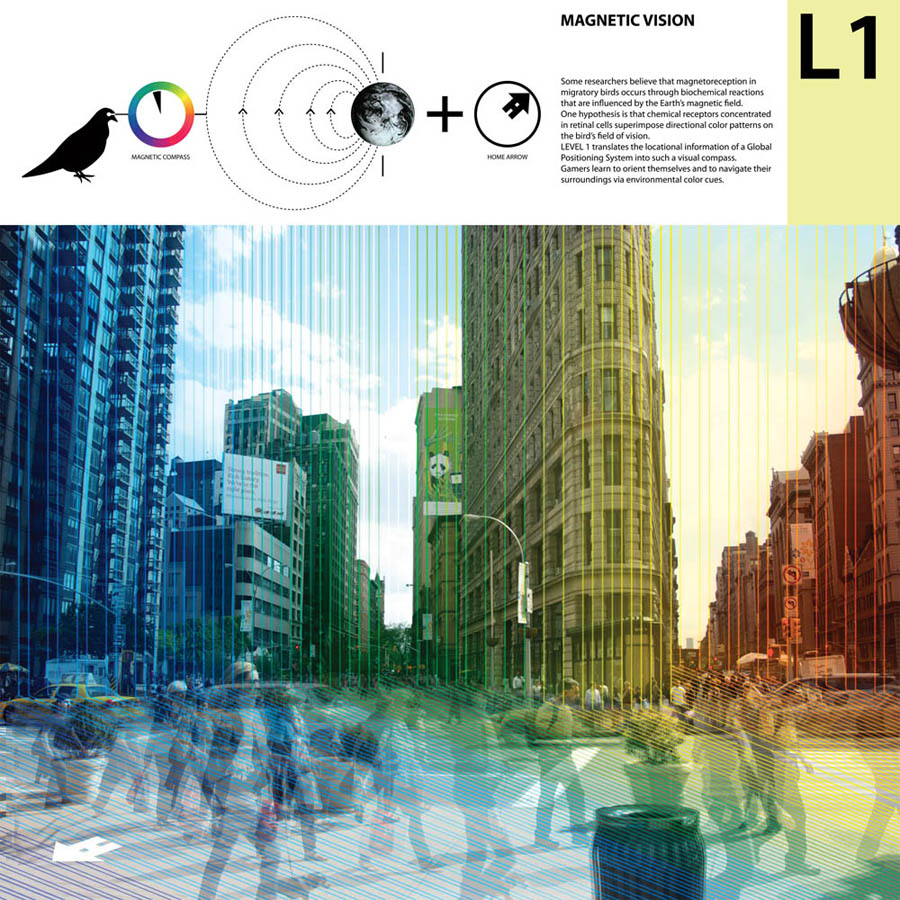 [Image: LEVEL 1 from “Theriomorphous Cyborg” by Simone Ferracina].
[Image: LEVEL 1 from “Theriomorphous Cyborg” by Simone Ferracina].
Last week, while I was lost in the process of moving east from Los Angeles to New York City, the Animal Architecture Awards were announced, a design competition for which I was proud to serve on the jury.
I’ll be posting at least two of the projects here, starting with what was ultimately the competition winner: a project called “Theriomorphous Cyborg” by Simone Ferracina.
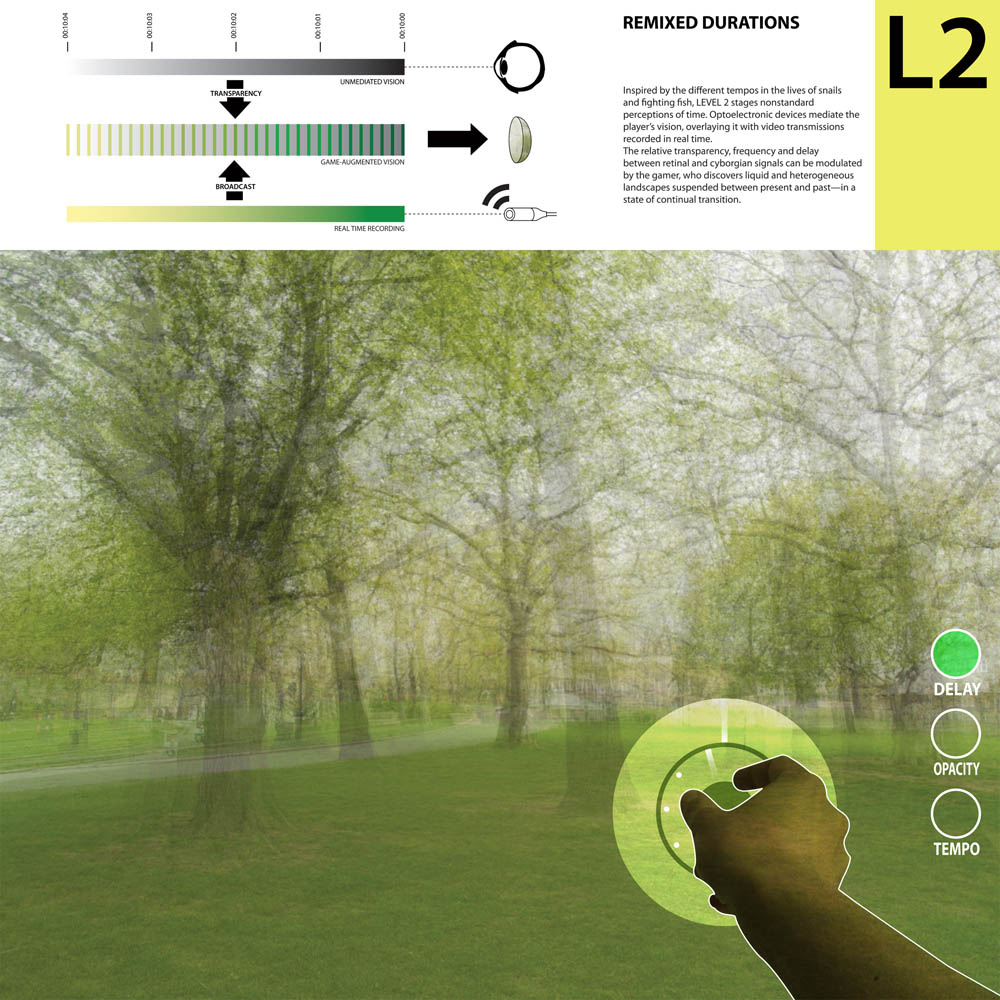 [Image: LEVEL 2 from “Theriomorphous Cyborg” by Simone Ferracina].
[Image: LEVEL 2 from “Theriomorphous Cyborg” by Simone Ferracina].
Ferracina’s project takes “a bewildering non-human gaze and the mysterious worlds it may engender” as its starting point, effectively plugging human beings into animal technologies, devices of transformative spatial cognition.
“Set in a near-future environment teeming with locative media, sensors and portable devices and co-constructed by virtual objects and information overlays,” Ferracina writes, “the project aims to establish and activate new relations between human cyborgs and their ‘sentient’ environment. The animal Umwelt becomes a metaphor for designing and opening up new perceptual realities and fields of experience—and reach previously invisible worlds.”
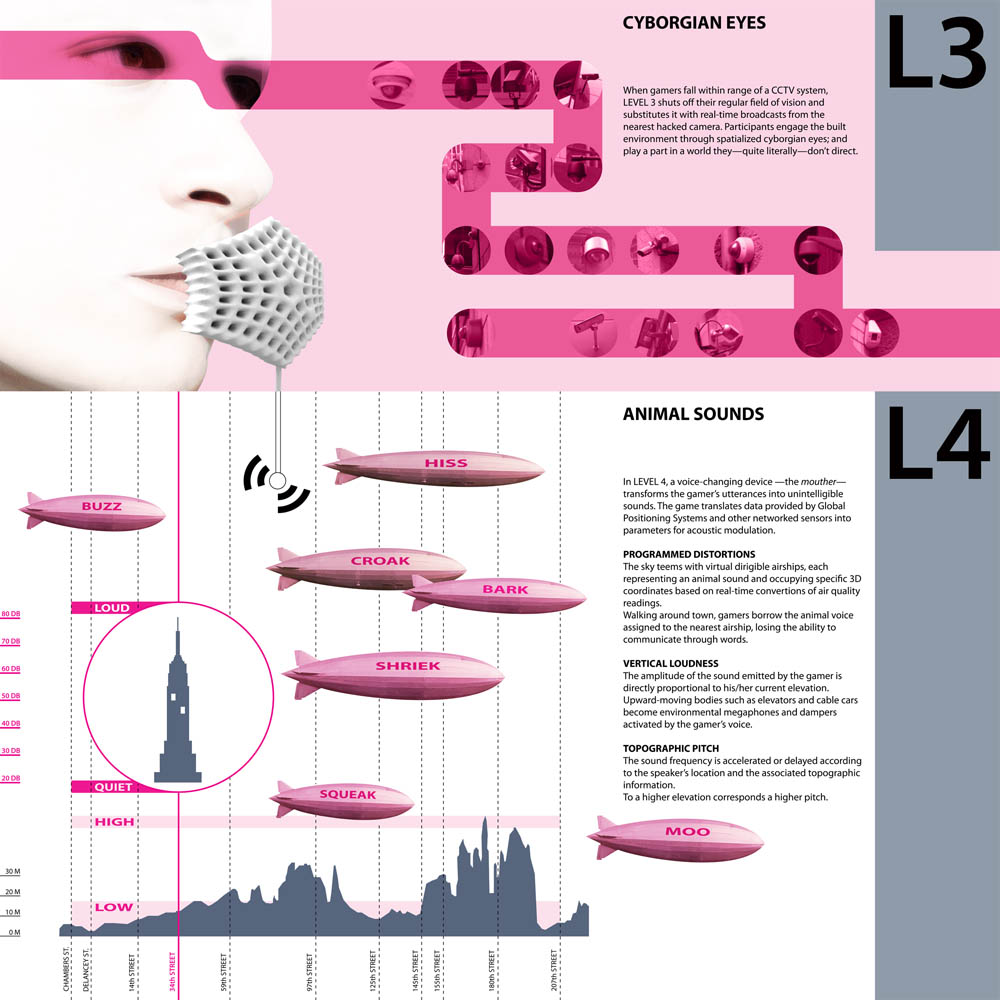 [Image: LEVELS 3-4 from “Theriomorphous Cyborg” by Simone Ferracina].
[Image: LEVELS 3-4 from “Theriomorphous Cyborg” by Simone Ferracina].
In this sense the project is similar in spirit to “Animal Superpowers” by Chris Woebken and Kenichi Okada—now on display at the Nevada Museum of Art as part of Landscape Futures—but it is also not strictly speaking architectural.
Concerned more with space itself—that is, with the spatiality of sensing: how animal bodies perceive, navigate, and interactively change their environments—the augmented sensory overlays of “Theriomorphous Cyborg” nonetheless instigate transformations in the urban terrains within which they function.
The project is designed as a game, complete with different sensory “levels.” Quoting at length:
Inspired by migratory birds and their ability to perceive the Earth’s magnetism, LEVEL 1 superimposes the participant’s field of vision with an additional signal consisting of directional color patterns. The gamer learns to navigate space according to his/her own magnetic compass. LEVEL 2 overlays synchronous retinal signals with asynchronous digital recordings, thus causing time to appear fluid and heterogeneous. Upon reaching LEVEL 3, all direct visual reception is shut off. Participants engage their surroundings relying entirely on the broadcast of cyborgian “eyes”—a network of hacked CCTV cameras activated by proximity. LEVEL 4 explores communication between the human and animal kingdoms, and Ernst Haeckel’s notion that language is the discriminating factor between them. A voice-changing device—the mouther—transforms the gamer’s utterances into incomprehensible animal sounds, preventing him/her from normal human interaction. LEVEL 5 changes the player’s appearance with theriomorphic features dependent on random sets of alternative geographies. LEVEL 6 mixes the consummatory cycles of gamers and bees. Optoelectronic devices paired with recognition technology mask billboards and signs with images of flowers, thus neutralizing their imposed top-down message. LEVEL 7 augments objects with electronic hairs, quills, scales, tails and feathers based on readings of atmospheric pressure, humidity, wind speed and temperature.
And this game is potentially infinite. As Ferracina writes, “Hundreds of potential levels follow, each representing both a pause in the self-absorbed routine of everyday survival and a window into the partial objectivities of human and animal ‘others.’ Rather than describing a progression culminating in the player’s victory and the software’s apparent defeat, the game folds continuously back upon itself, weaving new dynamic relations—new feedback loops—between living beings and their post-natural environments.”
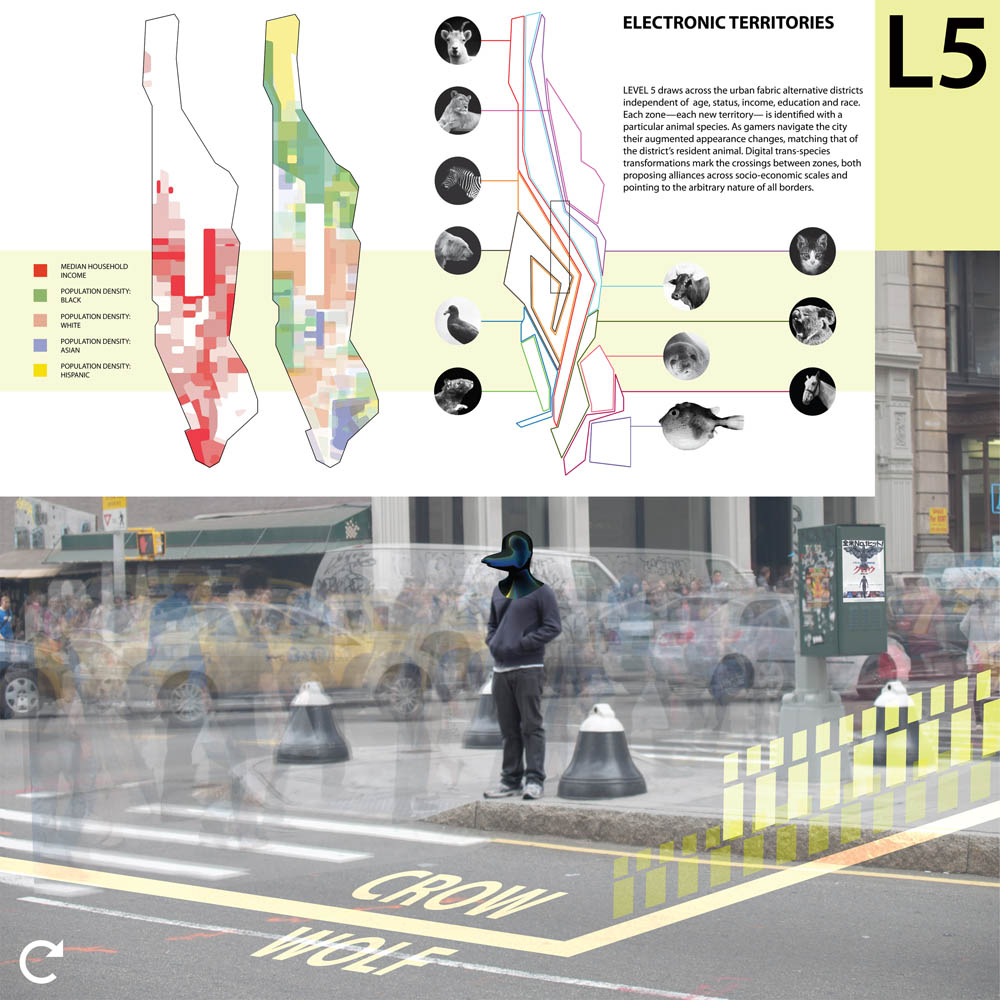
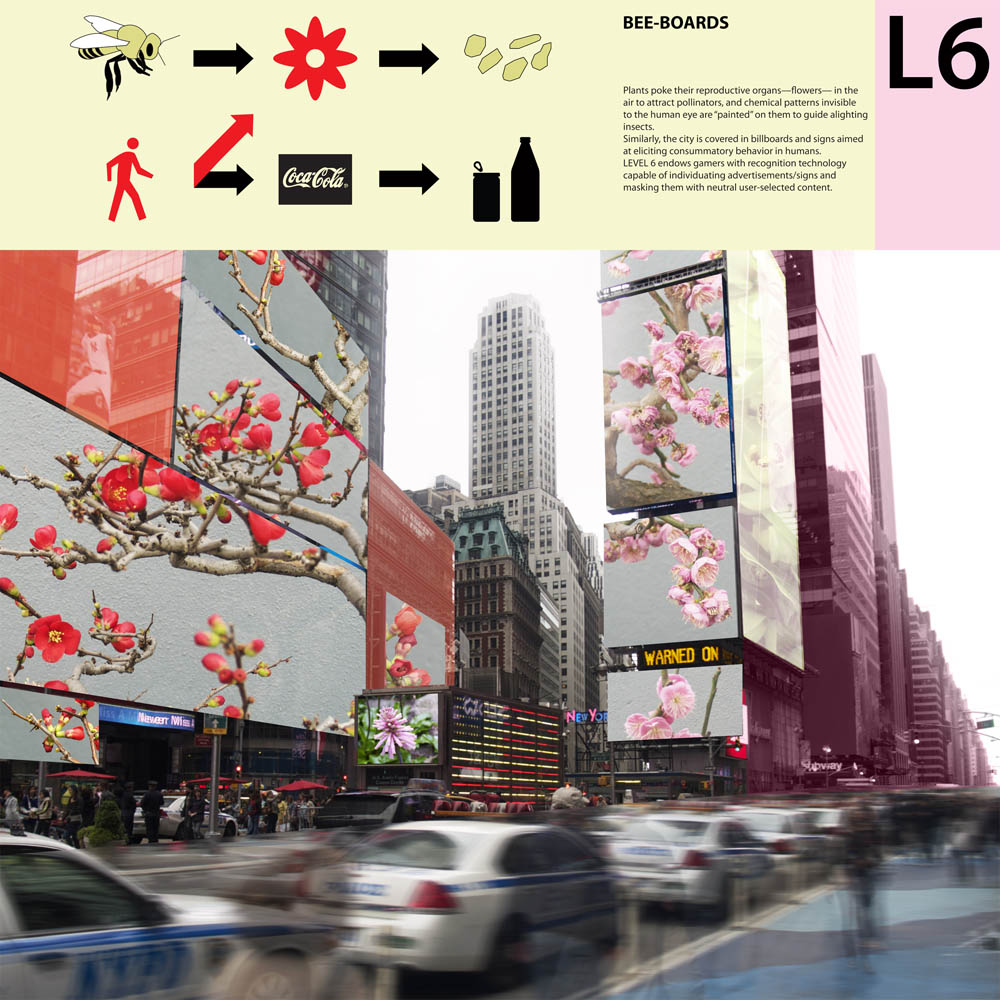
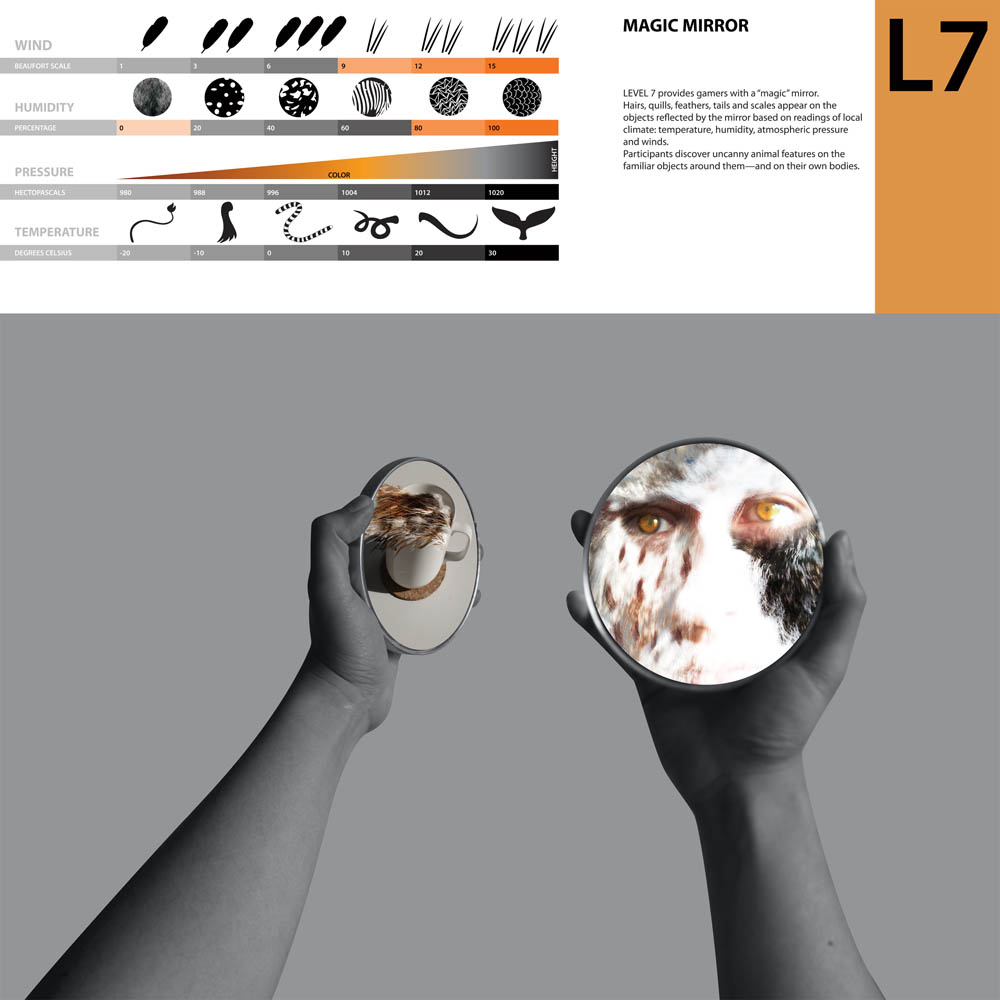 [Image: LEVELS 5, 6, and 7 from “Theriomorphous Cyborg” by Simone Ferracina].
[Image: LEVELS 5, 6, and 7 from “Theriomorphous Cyborg” by Simone Ferracina].
It’s a compelling, and highly provocative project; congratulations to Simone Ferracina for taking first prize.

An extreme 4-dimensional look into changing our 3-dimensional world….food for though for futurist, I guess.